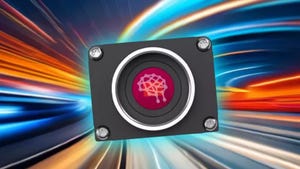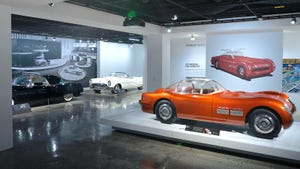April 29, 2011

Thefundamental design criteria for selecting an electricallyoperated diaphragm pump to handle air or gases has been well-covered aroundessential issues such as flow rates, inlet and outlet loads, chemicalcompatibility, voltage, and ambient and media temperature. But other equallyimportant parameters are often overlooked. Here's a rundown of the mostimportant:
1. External Leakage. This involves media escaping from inside the pumpor outside air leaking in and diluting the sample. Depending on theapplication, a simple bubble-tight construction may be acceptable with variousimprovements, including use of a secondary safety diaphragm to provide leaktightness of <0.000006 mBar l/sec. The first step is to define the level ofleakage that the system can tolerate and then accommodate from there.
2. Reverse Flow Leakage. The valves inside a pump typically are notdesigned to be absolutely tight when the pump is off. If absolute tightnessbecomes necessary, a pump modification, check valve or other option should bediscussed with the pump designer's technical contact.
3. Through Leakage. The internal geometry of a pump is such that flowfrom inlet to outlet occurs with minimum loss. Ideally, the loss is only theforce necessary to open the valves. In the "off" position this leads to thepossibility of a siphoning effect through the pump. A simple pressure controlvalve, check valve with suitable cracking pressure, or other modifications tothe pump and/or system should be considered as counter-measures.
4. Pulse Dampening. The reciprocating motion that produces flowperforms in a pulsating manner. Methods of reducing the pulse can include apulsation damper, two-headed pump with offset heads, an accumulator,reconfiguring placement of the pump in the system, and/or changing tubing typeand length.
5. Audible Noise. The first step in mitigating noise is todetermine its origin. Fluid noise (air or liquid) can be minimized throughproper selection of mufflers and filters, while transmission of mechanicalnoise generated by the pump may be reduced with proper vibration pump mounts,proper hose durometer
selection, and/or sound-absorbing material around the pump.
6. Electrical Noise. Electronics within the pump, the entire system, oreven neighboring devices may be sensitive to electrical emissions from ac or dcmotors. Standards such as EN61000 have been established to address electricalemissions from pumps, as well as immunity to electrical noise damage from otherdevices.
7. Speed Control. Matching the pump's speed to actual requirementsultimately will cause less stress on the pump and other components in thesystem, consume less energy, create less heat, and generate less noise andvibration.
8. Start Against a Load. Most pumps are not designed to start (or restart)against a load. Modifications to the pump can allow for starting or restartingagainst a load throughout its life without long-term damage, while avoiding complex and costly system changes external to the pump.
9. Effects Of Humidity. Compressing a humid gas during the mechanicalpumping process will result in condensate formation within the pump,potentially causing the motor to fail prematurely. A multi-port valve can offermore support for the valve's surface area and result in less strain anddeformation. A multi-port valve also can effectively pump out accumulated water.
10. Cavitation. This condition occurs when the pressure of aliquid drops below its vapor pressure. The situation can be avoided (or atleast minimized) by appropriately coordinating inlet tubing diameter and durometer, stroke lengthand suction speed.
11. Elevation. A pump's flow rate will vary, depending on its elevation. Most pumpperformance specifications are based on operation at sea level and willincrease or decrease as elevation changes.
David H.Vanderbeck, is business development manager for KNF Neuberger Inc.
For more information, go towww.knfoem.com.
About the Author(s)
You May Also Like





